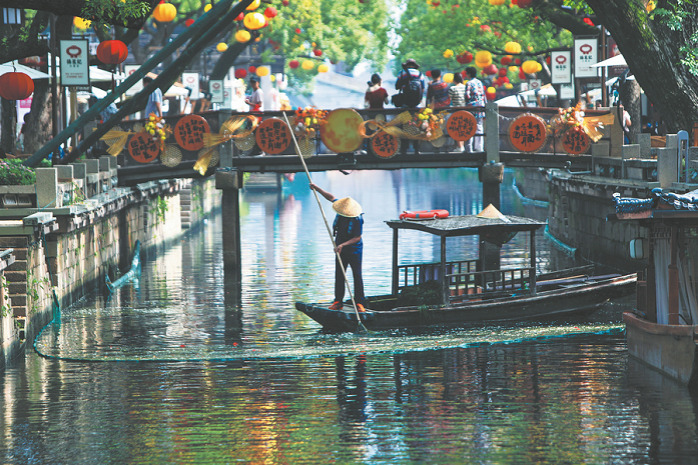Sense of history gives Xitang modern appeal


Han underscores the town's corridor sheds, some of which extend for nearly 1,000 meters. They were the invention of Huizhou merchants, who built the sheds in front of their shops to give customers shelter in bad weather like heavy wind, rain or snow.
"This shows their consideration for customers, and the Xitang corridor shed is viewed as a reflection of its genteel merchant culture," he says.
As few illustrious families lived in Xitang, there are only few high-level architectural complexes left. This is markedly different from other famous ancient towns in Zhejiang, such as Nanxun ancient town in Huzhou. Consequently, Xitang's inhabitants developed their own attitudes and cultural personalities.
"Xitang people prefer to keep a low-key profile. They don't have much demand for luxuries. They are more relaxed about life. They don't care too much about income or social status. They just enjoy living a simple life," Han says, adding that they are also tolerant and open-minded. This can be seen in their acceptance of tourists leaving messages on one of the town's bridges, the Songzi Laifeng Bridge (Bridge of Bringing Sons and Daughters), which is covered in graffiti.
"Residents don't mind the walls of the bridge being covered with graffiti, so tourists can feel free to draw whatever they wish. When they become too heavily covered, we just whitewash them so that people can continue," Han says.
Local authorities started to develop tourism in 1996. They have tried to protect original features and have developed the area on the basis of protecting old buildings, waterways, bridges and alleys and retaining the original residents.
One side of the town is the prosperous business district, with rows of shops along the water. This scene hasn't changed since the Qing Dynasty. Often located just behind the shops are people's homes.

































